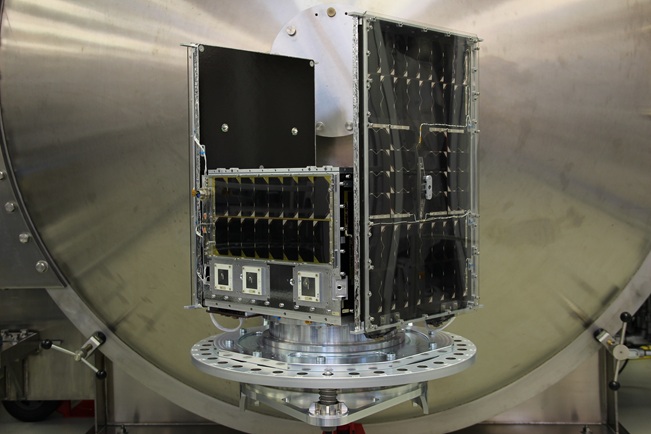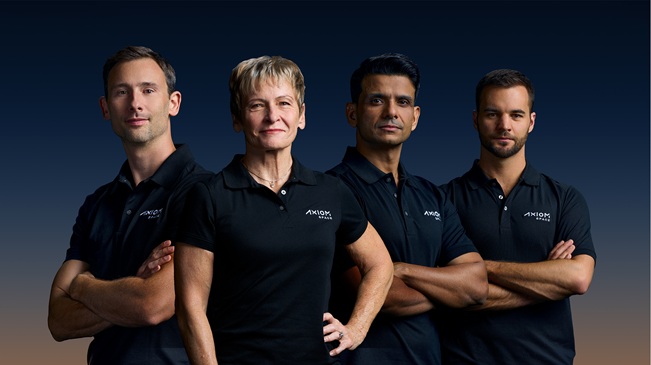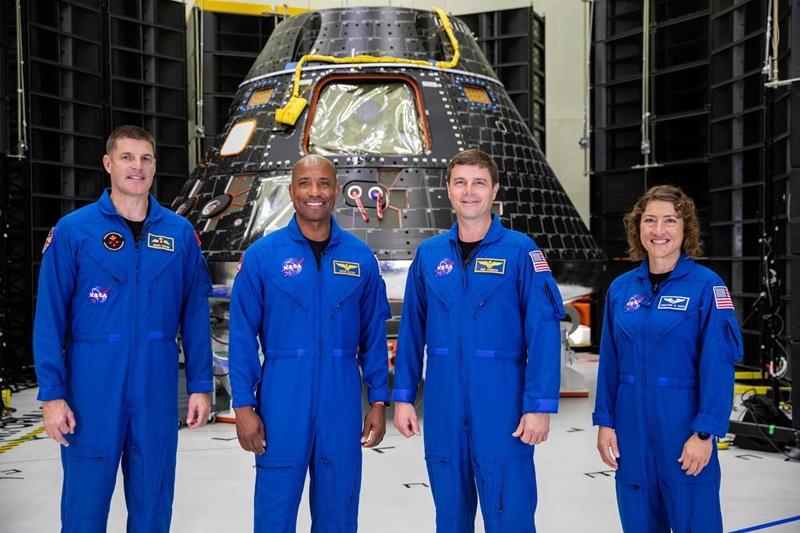TORONTO – In a remarkable stride toward unveiling the universe’s deepest mysteries, Space Flight Laboratory (SFL) has completed the assembly of the Aspera microsatellite bus, a pivotal milestone in a NASA-funded astrophysics mission poised to revolutionize our understanding of galaxy formation and evolution. This compact yet powerful spacecraft, engineered on SFL’s cutting-edge DEFIANT platform, is now ready to unite with the far-ultraviolet (far-UV) Aspera telescope crafted by the University of Arizona, setting the stage for a launch targeted in early 2026.
Aspera, deriving its name from the Latin word meaning “difficulty” or “hardship,” embodies the audacious quest to observe the elusive circumgalactic medium – the vast, hot gaseous envelope surrounding galaxies that has long evaded direct detection. This invisible reservoir is believed to harbor much of the universe’s missing matter, the very substance from which stars, planets, and ultimately life itself emerge.
“We know there must be some amount of matter in the universe… we’ve looked for it and still can’t find most of it. It’s likely in this circumgalactic medium,” explains Professor Carlos J. Vargas, principal investigator of the Aspera mission and astronomer at the University of Arizona’s Steward Observatory. “Why do we care about that? Because every star that has formed, every planet that’s formed, and all life on those planets must come from matter somewhere.”
This mission, supported by NASA’s Astrophysics Pioneers Program, represents a paradigm shift – leveraging small satellite technology to achieve “big science” goals once deemed financially and technically out of reach for compact platforms. “Just ten years ago, a mission like Aspera would not have been financially viable with traditional satellites,” Vargas notes. “The small satellite revolution has made this possible, and our partnership with SFL is a key enabler.”
At the heart of Aspera’s potential lies the spacecraft bus developed by SFL, a Toronto-based leader renowned for pioneering high-performance, stable, and cost-effective small satellites. The 60-kilogram DEFIANT microsatellite platform, roughly the size of a mini fridge, integrates advanced power systems, precise attitude control, and thermal management – all critical for the sensitive far-UV telescope’s success.
Dr. Robert E. Zee, Director of SFL, expresses pride in contributing to this groundbreaking mission: “We have developed Aspera on our 60-kg DEFIANT microsatellite platform. SFL is proud to play a role in such a challenging space astrophysics mission that will enhance our understanding of how the universe formed.”
The mission’s success hinges on the spacecraft’s ability to maintain extremely precise pointing of the onboard telescope, a feat SFL has mastered through decades of innovation in attitude control systems for low-mass satellites. This expertise has been proven across diverse applications, from Earth observation to atmospheric monitoring, making SFL uniquely qualified to deliver the stability Aspera demands.
The Aspera mission exemplifies how small satellites are transforming space science. By drastically reducing costs and development times, smallsats democratize access to space, enabling universities and research institutions to undertake ambitious projects previously reserved for large, expensive spacecraft.
Since its inception in 1998, SFL has developed 86 operationally successful small satellite missions, accumulating over 370 cumulative years in orbit. With 21 more spacecraft currently under development, SFL’s portfolio spans nano-, micro-, and small satellites ranging from 3 to 500 kilograms, tailored to a vast array of scientific and commercial missions.
This extensive experience underpins Aspera’s readiness and reliability, ensuring that the mission can deliver unprecedented far-UV observations of the circumgalactic medium. The data collected will illuminate the inflow and outflow of hot gases around galaxies, shedding light on the cosmic processes that govern star and planet formation.
Following the bus assembly milestone, SFL will conduct comprehensive instrument-spacecraft integration and testing at its Toronto facility later this year. These critical steps will validate the seamless operation of the telescope and spacecraft systems under simulated space conditions, including thermal vacuum testing to mimic the harsh environment beyond Earth’s atmosphere.
With launch slated for early 2026, Aspera is poised to become a trailblazer in astrophysics, demonstrating how innovative engineering and visionary science can converge to push the boundaries of human knowledge.
Aspera’s journey from concept to reality is a testament to international collaboration, technological ingenuity, and the relentless human drive to explore the cosmos. It stands as a beacon of inspiration for scientists, engineers, and dreamers alike, illustrating that even the most profound cosmic questions can be addressed with compact, cost-effective tools.
Professor Vargas reflects on the mission’s broader significance: “Every star, every planet, and every life form owes its existence to matter that has cycled through the universe. By uncovering the secrets of the circumgalactic medium, Aspera will help us understand our cosmic origins in a way never before possible.”
Space Flight Laboratory’s role in this endeavor highlights the transformative power of small satellite technology to unlock new frontiers in space science. Through their Flex Production program and commitment to quality and innovation, SFL continues to enable pioneering missions that redefine what is achievable in space exploration.





